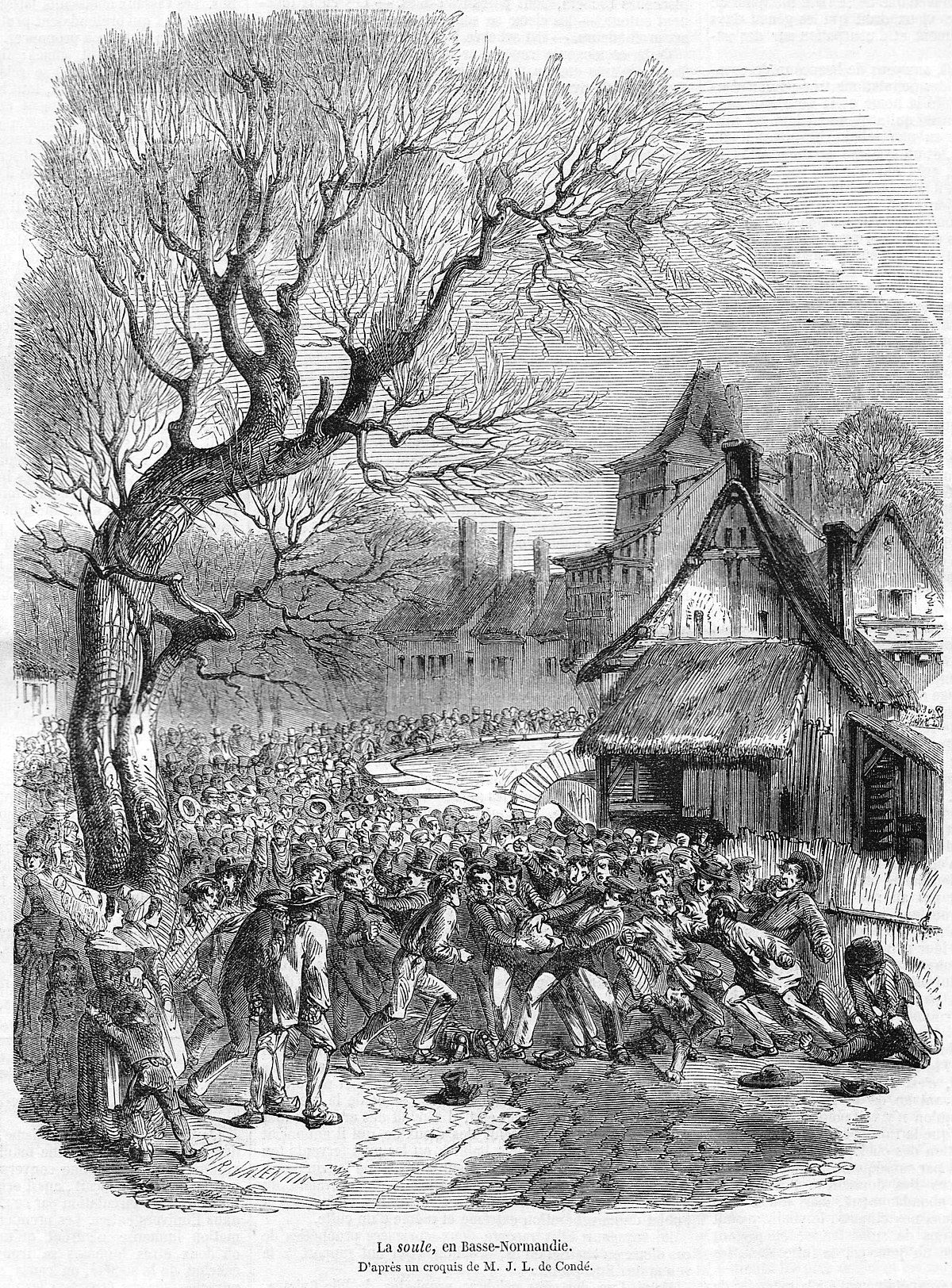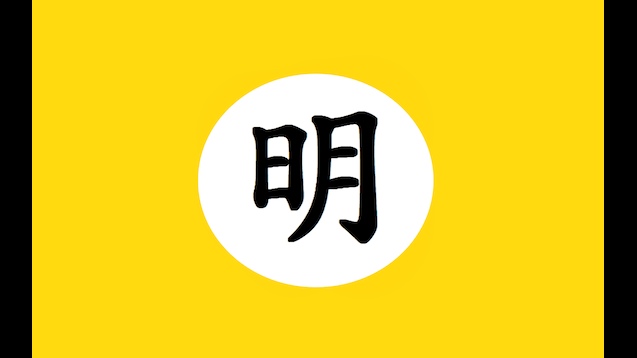Not that it excuses my hiatus but I am drafting another timeline right now.Nice to see you continuing. Many of the America timelines seem to be on hiatus: mine, PBSG, HeX, etc.
You are using an out of date browser. It may not display this or other websites correctly.
You should upgrade or use an alternative browser.
You should upgrade or use an alternative browser.
English Canada/French Carolina: A Timeline
- Thread starter Gabingston
- Start date
Threadmarks
View all 192 threadmarks
Reader mode
Reader mode
Recent threadmarks
Part 150: The World As Of 1970 World Map As Of 1970 Part 151: America Revisited - The Thirteen Colonies Part 152: America Revisited - The Great Lakes Part 152: America Revisited - The Great Plains Part 154: America Revisited - The West Coast Resource Guide: Commonwealth Of America Locations As Of Part 154 Russian Retcon Ideas (Could Be Contentious)FTFYNaturally, this didn’t go over so well with the populace
I'm thinking of doing an update on sports/athletics next. Any suggestions as to how the sports world will evolve ITTL?
Personally, I don't think American Football will evolve quite the same as it did in our world; so much of its development is linked to events and persons after the Revolution. We may well see something similar arise, though, but it could be closer to rugby or more traditional football. I personally believe we will see some kind of local sport/sports arise as a pastime in the Americas, but it may well be passed back to the mother country as a sport as well. Baseball with more cricket features, perhaps?
Soccer style football will likely reign supreme, in my opinion. There may be some minor variations, but the general ideas were in place and the game is such a simple concept to understand.
Perhaps the French in Florida would see the development of their own national sports as well. Perhaps a version of La Soule?

 en.wikipedia.org
en.wikipedia.org
Soccer style football will likely reign supreme, in my opinion. There may be some minor variations, but the general ideas were in place and the game is such a simple concept to understand.
Perhaps the French in Florida would see the development of their own national sports as well. Perhaps a version of La Soule?

La soule - Wikipedia
Maybe something like this? https://www.alternatehistory.com/forum/threads/ah-fiction-the-game-of-driveball.467752/We may well see something similar arise, though, but it could be closer to rugby or more traditional football.
Part 91: The World Of Sports
Part 91: The World of Sports
Most of my posts in this series have been on politics, military or demographics, so how about a change of pace: a culture-focused update, specifically on the world of sports and athletics? Sounds good? Okay, let’s go.We humans like to play games. Games are an intrinsic part of cultures around the world, and due to physical activity also being an intrinsic part of the human experience, it’s no surprise that we play games that involve physical activity as well.
Records of sports go back thousands of years, and many regions of the world have had their own games, but it was towards the 19th Century that various sports began to gain an official, standardized ruleset. Many games played in schoolyards and among various villages evolved into codified sports with official clubs and teams, spreading around the world via trade and colonization. Here is a quick sample of some of the sports that became popular throughout the world.
Association Football: Games centered around kicking a ball with one’s feet go back millennia to various regions of the world, but the form of Football that got popular originated in Britain during the Mid 19th Century, quickly spreading throughout Europe and to various European colonies. Overall, it’s pretty similar to OTL’s Association Football, albeit with a few minor differences that I can’t pinpoint.
Tennis: Originating from a game played by Western European royalty, Tennis was standardized in the 1860s in Britain, spreading out from there. It’s very similar to OTL’s Tennis, but there’d probably be some minor differences.
Batonball: Having its origins in the English game of Rounders, Batonball evolved in the Commonwealth of America, before spreading out around North America and the American-influenced parts of the British Empire. The whole jist of the game is based on hitting a pitched or thrown ball with a Bat/Baton, and running around as many bases as you can without getting out. Overall, it’s very similar to OTL’s Baseball, with some differences here and there (notice a running theme here).
Rugball: Sharing the same origins as the aforementioned Football, the game took on a different character in and around the town of Rugby, formally splitting from standard Football in the 1860s. The sport was originally called Rugby Football, but was gradually shortened to Rugball. The game quickly spread to Continental Europe and across the British Empire, with regional variants developing in both the Commonwealth of America and Australia.
With that out of the way, it’s time to talk about some of the sporting competitions that came to be. There’d been sporting competitions within countries or regions in the Late 19th and Early 20th Centuries, and various leagues and associations developed for sports, but it was after the Second Global War of the 1910s that International competitions started to spring up. After all the devastation and death of the war, the idea came about to get nations’ competitive urges out through sport rather than through bloodshed. One of the ideas was to revive the Ancient Olympic Games, which were a mainstay of Ancient Greek culture but stopped during the Roman Empire’s Christianization (as the games also served as a pagan festival). The idea soon gained favor, and in 1920, the first modern Olympics (this time without the pagan elements) were held in Athens (because where else would you hold it)? After the 1920 Athens, 1924 Berlin and 1928 Paris games, the Olympics were expanded to include Winter Games in the middle year between each of the Summer Games, with the first Winter Olympics being held in Zurich in 1930.
However, that was not the only idea for an International Competition. Seeing the success of the Olympics, the idea came about to hold a tournament for various countries’ national Football/Soccer teams to compete, calling it the Prix du Monde, or World Prize. The first World Prize Football Tournament was held in France in 1934, with England defeating Brazil for the Championship. Sports were becoming an increasingly competitive and international affair, and it would sure bring interesting moments and events to come over the following decades...
Kaiser Wilhelm the Tenth
Banned
Nice to see this one continuing.
I haven't commented much here, but this is great- keep it up!
I haven't commented much here, but this is great- keep it up!
So the Olympics and World Cup are finally underway. Nice. And I still think the Summer and Winter Olympics should be held the same year for a while as they didn't diverge until the 1994 Winter/1996 Summer Games OTL. Other than that, excellent work.Part 91: The World of SportsMost of my posts in this series have been on politics, military or demographics, so how about a change of pace: a culture-focused update, specifically on the world of sports and athletics? Sounds good? Okay, let’s go.
We humans like to play games. Games are an intrinsic part of cultures around the world, and due to physical activity also being an intrinsic part of the human experience, it’s no surprise that we play games that involve physical activity as well.
Records of sports go back thousands of years, and many regions of the world have had their own games, but it was towards the 19th Century that various sports began to gain an official, standardized ruleset. Many games played in schoolyards and among various villages evolved into codified sports with official clubs and teams, spreading around the world via trade and colonization. Here is a quick sample of some of the sports that became popular throughout the world.
Association Football: Games centered around kicking a ball with one’s feet go back millennia to various regions of the world, but the form of Football that got popular originated in Britain during the Mid 19th Century, quickly spreading throughout Europe and to various European colonies. Overall, it’s pretty similar to OTL’s Association Football, albeit with a few minor differences that I can’t pinpoint.
Tennis: Originating from a game played by Western European royalty, Tennis was standardized in the 1860s in Britain, spreading out from there. It’s very similar to OTL’s Tennis, but there’d probably be some minor differences.
Batonball: Having its origins in the English game of Rounders, Batonball evolved in the Commonwealth of America, before spreading out around North America and the American-influenced parts of the British Empire. The whole jist of the game is based on hitting a pitched or thrown ball with a Bat/Baton, and running around as many bases as you can without getting out. Overall, it’s very similar to OTL’s Baseball, with some differences here and there (notice a running theme here).
Rugball: Sharing the same origins as the aforementioned Football, the game took on a different character in and around the town of Rugby, formally splitting from standard Football in the 1860s. The sport was originally called Rugby Football, but was gradually shortened to Rugball. The game quickly spread to Continental Europe and across the British Empire, with regional variants developing in both the Commonwealth of America and Australia.
With that out of the way, it’s time to talk about some of the sporting competitions that came to be. There’d been sporting competitions within countries or regions in the Late 19th and Early 20th Centuries, and various leagues and associations developed for sports, but it was after the Second Global War of the 1910s that International competitions started to spring up. After all the devastation and death of the war, the idea came about to get nations’ competitive urges out through sport rather than through bloodshed. One of the ideas was to revive the Ancient Olympic Games, which were a mainstay of Ancient Greek culture but stopped during the Roman Empire’s Christianization (as the games also served as a pagan festival). The idea soon gained favor, and in 1920, the first modern Olympics (this time without the pagan elements) were held in Athens (because where else would you hold it)? After the 1920 Athens, 1924 Berlin and 1928 Paris games, the Olympics were expanded to include Winter Games in the middle year between each of the Summer Games, with the first Winter Olympics being held in Zurich in 1930.
However, that was not the only idea for an International Competition. Seeing the success of the Olympics, the idea came about to hold a tournament for various countries’ national Football/Soccer teams to compete, calling it the Prix du Monde, or World Prize. The first World Prize Football Tournament was held in France in 1934, with England defeating Brazil for the Championship. Sports were becoming an increasingly competitive and international affair, and it would sure bring interesting moments and events to come over the following decades...
Last edited:
I know that the years of the Summer and Winter games weren't separate until the 90s, but I decided to put that separation in immediately anyways.So the Olympics and World Cup are finally underway. Nice. And I still think the Summer and Winter Olympics should be held the same year for a while as they didn't diverge until the 1994 Winter/1996 Summer Games OTL. Other than that, excellent work.
Now that I've done the sports update, it's time to get back to China, and I've got two main questions that I want y'all to help me decide.
First, you guys voted that China would end up under either a military regime or a new dynasty, so that's obviously what I'm gonna do. Now, looking from OTL's post-Qing China, I see three main options based on my research (source here).
Second, what regions of China will separate? Namely, I'm looking at Mongolia, Xinjiang and Tibet, and possibly a rump Qing Dynasty in Manchuria. IOTL, Mongolia and Tibet both became independent after the fall of the Qing Dynasty (although Tibet was later reconquered by the PRC), but it could range from all of them becoming independent to all of them remaining part of China, you guys decide.
First, you guys voted that China would end up under either a military regime or a new dynasty, so that's obviously what I'm gonna do. Now, looking from OTL's post-Qing China, I see three main options based on my research (source here).
- The Duke Yansheng, the direct descendant of Confucius.
- The Marquis of Extended Grace, the descendant of the Ming Dynasty, an era that many Han Chinese looked back upon fondly.
- An ATL Yuan Shikai analogue that succeeds at taking power and establishing a brand new dynasty (as attempted by Yuan IOTL).
Second, what regions of China will separate? Namely, I'm looking at Mongolia, Xinjiang and Tibet, and possibly a rump Qing Dynasty in Manchuria. IOTL, Mongolia and Tibet both became independent after the fall of the Qing Dynasty (although Tibet was later reconquered by the PRC), but it could range from all of them becoming independent to all of them remaining part of China, you guys decide.
I’d love to see all four of those, and for them to remain perma-separateNow that I've done the sports update, it's time to get back to China, and I've got two main questions that I want y'all to help me decide.
First, you guys voted that China would end up under either a military regime or a new dynasty, so that's obviously what I'm gonna do. Now, looking from OTL's post-Qing China, I see three main options based on my research (source here).
Here's the poll on what China's new dynasty will be: https://www.strawpoll.me/21185125
- The Duke Yansheng, the direct descendant of Confucius.
- The Marquis of Extended Grace, the descendant of the Ming Dynasty, an era that many Han Chinese looked back upon fondly.
- An ATL Yuan Shikai analogue that succeeds at taking power and establishing a brand new dynasty (as attempted by Yuan IOTL).
Second, what regions of China will separate? Namely, I'm looking at Mongolia, Xinjiang and Tibet, and possibly a rump Qing Dynasty in Manchuria. IOTL, Mongolia and Tibet both became independent after the fall of the Qing Dynasty (although Tibet was later reconquered by the PRC), but it could range from all of them becoming independent to all of them remaining part of China, you guys decide.
Part 92: A New China
Part 92: A New China
It is the year 1913, and the Qing Dynasty has fallen. However, what is to take its place is up in the air. After all, China is a huge country, and there was a great deal of diversity within China, whether it comes to ethnicity, language, geography, climate or beliefs. Many regions of the country had desired more autonomy, if not full independence, and with the political turmoil of the fall of the Qing Dynasty, you can bet that these areas were going to seize the moment and fight for their self-determination.Tibet was the first area to pack their bags, declaring independence in July of 1913. Mongolia followed in September, with Uighurstan being the last to go in March of 1914. Also, you know how I’ve been saying that the Qing Dynasty was dead or had fallen? Well, that’s only partially true, as the Dynasty evacuated to Manchuria, where they set up their capital in Changchun. Needless to say, the new Chinese government was not happy about the secession of most of their frontier territories, but there wasn’t much they could do at this point.Now, how about this new Chinese government? Well, with the exception of some more radical groups and individuals, it was largely agreed that the new Chinese government was going to be a monarchy, as it was in line with millennia of Chinese tradition and was thought that it could better unify the country, since there wouldn’t be squabbles over who the ruler of the country would be. However, it was also clear that the structure of the government would need an overhaul, so a new Chinese legislature called the Imperial Council, which was to be based out of Nanjing, with the first elections being held in 1916. The new government adopted a federal model similar to countries like the Commonwealth of America, with each of the provinces having a degree of autonomy, while being subject to the central government.
However, the biggest question was who would rule the country. As previously mentioned, China was going to have a new dynasty, and it was obviously a big debate as to what that was going to be. There were more than a few generals who had ambitions to become Emperor, and there was an idea to make a descendant of Confucius the new Emperor, but in the end, the most popular candidate for the new dynasty wasn’t so new after all…
They decided to bring back the Ming Dynasty.
Whenever a new dynasty rose to power in China, it was common to give the preceding dynasty some sort of noble title, and the transition from the Ming to the Qing was no exception, as the descendants of the last Ming emperor were given the title of Marquis of Extended Grace. Many Han Chinese looked back upon the Ming era (1368-1644) with fondness, and viewed the dynasty as purely Chinese, unlike the Mongol Yuan Dynasty who preceded them or the Manchu Qing who came after. So, the idea of a revamped Ming Dynasty soon gained favor among many Chinese, and when it came to choosing who the new Emperor would be, it turned out to not be all that new after all, and before you knew it, the heir to the Ming Dynasty was strolling into the Forbidden City (while the Legislature may have been put in Nanjing, the Imperial residency stayed in Beijing).
After a century of humiliation, the restoration of the Ming was an opportunity for The Middle Kingdom to regroup and start anew, and if they played their cards right, the dragon’s slumber may come to an end.

Flag of Mongolia

Flag of Tibet

Flag of Uighurstan
*None of these flags are mine, and some of them are alternate flags made by other people. Please don't sue me.
Okay, now I'm gonna get on with a South American update. Remember that, as of the current point in the TL (1920s-30s), South America looks like this:

New Granada, Peru and La Plata are Spanish Dominions, Brazil is under the same Dynasty as Portugal, and Patagonia is a British Dominion, while the Dutch still have the colony of Guyana/Suriname. However, I don't see OTL Bolivia remaining part of La Plata or Chile remaining part of Peru in the long term, but I'd like to see suggestions from you guys before I make any decisions. Also, how do y'all see South America developing ITTL?
New Granada, Peru and La Plata are Spanish Dominions, Brazil is under the same Dynasty as Portugal, and Patagonia is a British Dominion, while the Dutch still have the colony of Guyana/Suriname. However, I don't see OTL Bolivia remaining part of La Plata or Chile remaining part of Peru in the long term, but I'd like to see suggestions from you guys before I make any decisions. Also, how do y'all see South America developing ITTL?
I see this version of South America being much more stable. Or parts anyway. The northern nations probably don't have to worry about British North America (and certainly not French North America) participating in an analog of the Bannana Wars as they have bigger issues on their door step to worry about.
Okay, so here are the options for this poll on what happens with Chile and OTL Bolivia. I will hold a runoff poll if none of the options get a majority of the votes (which is likely).
1: Status Quo (Chile in Peru, Bolivia in La Plata)
2: Chile becomes independent, but Bolivia doesn't.
3: Bolivia becomes independent, but Chile doesn't.
4: Both become independent.
5: Peru and La Plata swap land (Chile to La Plata, Bolivia to Peru)
Here's the link to the poll: https://www.strawpoll.me/26887328
1: Status Quo (Chile in Peru, Bolivia in La Plata)
2: Chile becomes independent, but Bolivia doesn't.
3: Bolivia becomes independent, but Chile doesn't.
4: Both become independent.
5: Peru and La Plata swap land (Chile to La Plata, Bolivia to Peru)
Here's the link to the poll: https://www.strawpoll.me/26887328
Looking at the Map, I can see La Plata wanting the coastline that Chile would provide them, especially since their Atlantic coast is miniscule. What's La Plata's relationship with Britain? I could see it being rather antagonistic with the easy leap of "The Brits stole Patagonia from us!"
Alternately, perhaps Britain/Patagonia supports independence movements in Chile, create a somewhat friendly ally against possible Platan aggression?
Threadmarks
View all 192 threadmarks
Reader mode
Reader mode
Recent threadmarks
Part 150: The World As Of 1970 World Map As Of 1970 Part 151: America Revisited - The Thirteen Colonies Part 152: America Revisited - The Great Lakes Part 152: America Revisited - The Great Plains Part 154: America Revisited - The West Coast Resource Guide: Commonwealth Of America Locations As Of Part 154 Russian Retcon Ideas (Could Be Contentious)
Share:

